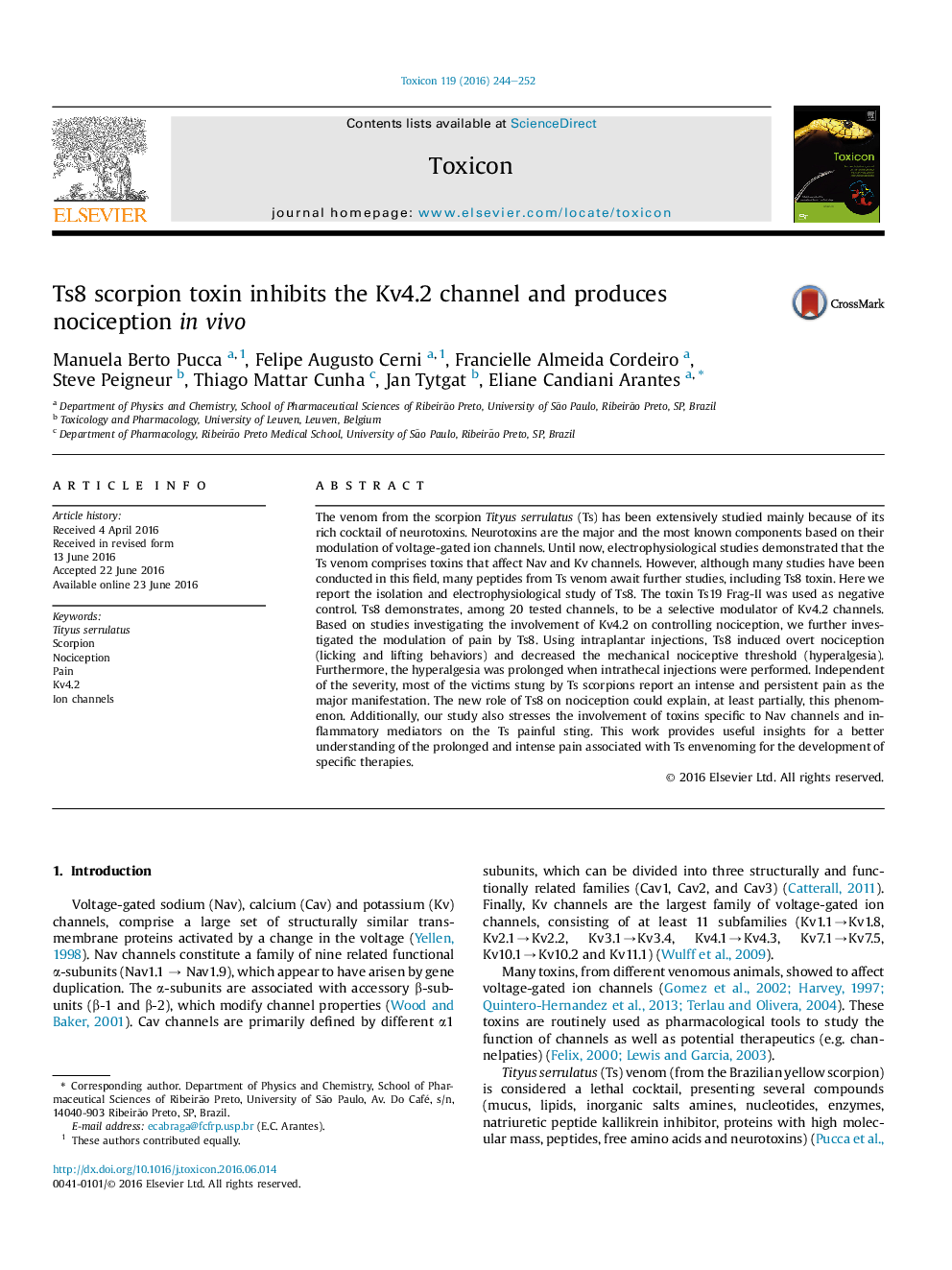| کد مقاله | کد نشریه | سال انتشار | مقاله انگلیسی | نسخه تمام متن |
|---|---|---|---|---|
| 2064013 | 1544117 | 2016 | 9 صفحه PDF | دانلود رایگان |

• Ts8 demonstrates to be a selective modulator of Kv4.2 channels.
• Ts8 induced overt nociception (licking and lifting behaviors).
• Ts8 decreased the mechanical nociceptive threshold (hyperalgesia).
• Ts8 prolonged hyperalgesia when intrathecal injections were performed.
• This study also stresses the involvement of toxins specific to Nav channels on the Ts painful sting.
The venom from the scorpion Tityus serrulatus (Ts) has been extensively studied mainly because of its rich cocktail of neurotoxins. Neurotoxins are the major and the most known components based on their modulation of voltage-gated ion channels. Until now, electrophysiological studies demonstrated that the Ts venom comprises toxins that affect Nav and Kv channels. However, although many studies have been conducted in this field, many peptides from Ts venom await further studies, including Ts8 toxin. Here we report the isolation and electrophysiological study of Ts8. The toxin Ts19 Frag-II was used as negative control. Ts8 demonstrates, among 20 tested channels, to be a selective modulator of Kv4.2 channels. Based on studies investigating the involvement of Kv4.2 on controlling nociception, we further investigated the modulation of pain by Ts8. Using intraplantar injections, Ts8 induced overt nociception (licking and lifting behaviors) and decreased the mechanical nociceptive threshold (hyperalgesia). Furthermore, the hyperalgesia was prolonged when intrathecal injections were performed. Independent of the severity, most of the victims stung by Ts scorpions report an intense and persistent pain as the major manifestation. The new role of Ts8 on nociception could explain, at least partially, this phenomenon. Additionally, our study also stresses the involvement of toxins specific to Nav channels and inflammatory mediators on the Ts painful sting. This work provides useful insights for a better understanding of the prolonged and intense pain associated with Ts envenoming for the development of specific therapies.
Figure optionsDownload as PowerPoint slide
Journal: Toxicon - Volume 119, 1 September 2016, Pages 244–252